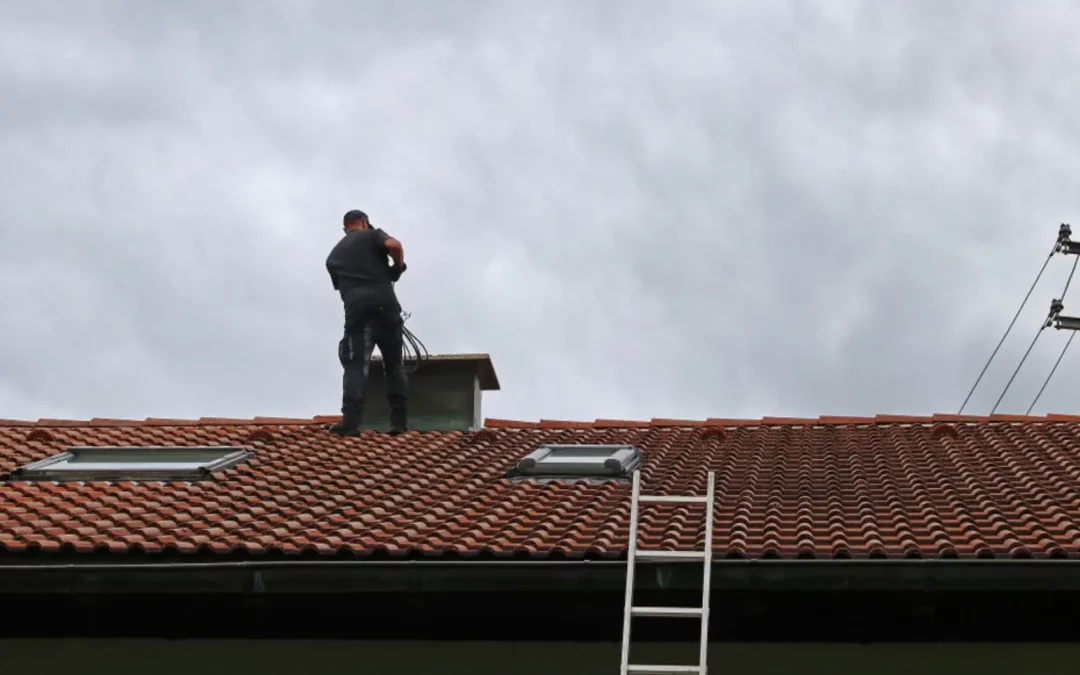Houston homeowners face a unique challenge when it comes to maintaining their chimneys and fireplaces. While many residents enjoy the cozy ambiance of a crackling fire during the brief winter months, few realize that the city’s notorious humidity silently damages these structures year-round. The Gulf Coast’s moisture-laden air creates perfect conditions for accelerated deterioration that can compromise both the safety and functionality of chimney systems. Understanding how Houston’s climate affects these home features is essential for proper maintenance and preventing costly repairs.
For homes with fireplaces, regular inspection by a qualified chimney sweep is not just a recommendation—it’s a necessity in Houston’s humid environment. The combination of high moisture levels and seasonal temperature fluctuations creates a particularly challenging environment for masonry structures like chimneys, which are designed to withstand heat and fire but are surprisingly vulnerable to water damage.
The Science Behind Houston’s Humidity Problem
Houston’s proximity to the Gulf of Mexico results in average relative humidity levels that frequently exceed 75% throughout the year. This moisture-saturated air impacts homes in numerous ways, but chimneys are particularly susceptible due to their design and materials. Traditional masonry chimneys consist of porous materials like brick, mortar, and concrete—all of which readily absorb moisture from the surrounding air.
When humid air comes into contact with the cooler surfaces inside a chimney, condensation occurs. This process creates a continuous cycle of moisture accumulation within the chimney structure. During summer months, when air conditioning keeps home interiors cool while outside temperatures soar, the temperature differential exacerbates this condensation effect within the chimney system.
The bricks and mortar that form most chimneys act like sponges in Houston’s humid climate. A single brick can absorb up to a pint of water, expanding slightly as it becomes saturated. This repeated cycle of moisture absorption and evaporation gradually weakens the structural integrity of the entire system, creating openings for more water to penetrate during heavy rainfalls—a common occurrence in the Bayou City.
Common Humidity-Related Chimney Issues in Houston Homes
The relentless Houston humidity manifests in several distinct problems that homeowners should recognize before they become serious hazards:
Efflorescence – Those white, chalky deposits on chimney bricks are more than just an eyesore. This crystalline growth occurs when water dissolves salts within the masonry and carries them to the surface as the moisture evaporates. While the visible white residue isn’t directly harmful, it serves as a warning sign that moisture is actively penetrating the chimney structure.
Spalling – Perhaps the most visibly alarming sign of moisture damage, spalling occurs when the face of bricks begins to flake, pop off, or crumble. This deterioration happens when moisture trapped inside the brick freezes and expands during Houston’s occasional cold snaps. Though winter temperatures rarely remain below freezing for extended periods, even brief freezes can cause significant damage to moisture-saturated masonry.
Mortar Joint Deterioration – The mortar binding chimney bricks together is often the first component to show signs of humidity damage. As mortar deteriorates, it creates pathways for even more moisture to enter the structure. Receding, cracking, or crumbling mortar joints significantly compromise a chimney’s structural integrity and fire safety properties.
Rusted Dampers and Metal Components – The same humidity that affects masonry causes metal components within the chimney system to corrode. Dampers, chase covers, caps, and internal flashing are particularly vulnerable, especially in older homes. When these metal elements fail, water gains direct access to the chimney’s interior and potentially the home itself.
Creosote Buildup – Houston’s humidity creates ideal conditions for accelerated creosote accumulation. This highly flammable byproduct of burning wood combines with moisture to form a sticky, hazardous coating inside chimneys. Professional removal by a trained chimney sweep is essential to prevent dangerous chimney fires.
Health and Safety Concerns from Humid Chimney Conditions
The problems caused by Houston’s humidity extend beyond structural damage to present genuine health and safety risks for household occupants:
Mold and Mildew Growth – Damp chimney environments provide perfect breeding grounds for various mold species. These fungi can release spores into home air circulation systems, potentially triggering respiratory issues, allergic reactions, and other health concerns. Dark, confined chimney spaces rarely dry completely in Houston’s climate, allowing mold colonies to flourish year-round.
Indoor Air Quality Degradation – A compromised chimney can introduce pollutants into the living space. When humid air reacts with creosote deposits, it can create unpleasant odors that permeate the home, particularly during humid summer months or periods of heavy rainfall. These conditions may exacerbate symptoms for those with respiratory sensitivities.
Increased Fire Risk – Perhaps most concerning is how humidity-induced chimney deterioration increases potential fire hazards. Cracked flue liners, excessive creosote buildup, and compromised masonry can all contribute to dangerous chimney fires or allow heat and flames to access combustible portions of the home’s structure.
Carbon Monoxide Dangers – When moisture damage compromises a chimney’s ability to properly vent combustion gases, the risk of carbon monoxide entering the living space increases significantly. This odorless, colorless gas can cause symptoms ranging from headaches and dizziness to unconsciousness and death in severe exposure cases.
Effective Moisture Protection Strategies for Houston Chimneys
Protecting chimneys from Houston’s persistent humidity requires a multi-faceted approach focused on moisture prevention and regular maintenance:
Waterproofing Applications – Professional-grade chimney waterproofing treatments provide an effective barrier against moisture absorption while still allowing the masonry to “breathe.” Unlike standard sealants that can trap moisture within bricks, quality chimney waterproofing products repel water while permitting vapor to escape. A professional chimney sweep can recommend and apply the appropriate solution for specific chimney conditions.
Quality Chimney Caps – Installing a well-designed chimney cap is one of the most cost-effective protection measures for Houston homes. These devices prevent rain from directly entering the flue while also keeping out animals, debris, and additional moisture sources. Stainless steel caps offer superior durability in Houston’s corrosive coastal air.
Crown Sealing and Repair – The concrete crown at the top of the chimney provides critical protection against water penetration. Crowns often develop cracks in Houston’s extreme temperature fluctuations, allowing moisture to seep into the masonry structure. Professional inspection and sealing of the crown should be part of regular maintenance routines.
Flashing Maintenance – The metal flashing that seals the junction between the chimney and roof is particularly vulnerable to failure in humid conditions. Proper installation and regular inspection of this critical component prevent water from entering the home at one of its most vulnerable points.
Regular Professional Inspections – Annual evaluation by a certified chimney sweep is essential for Houston homeowners. These professionals can identify early signs of humidity damage before they develop into serious structural problems or safety hazards. The small investment in regular inspections can prevent costly repairs and ensure the chimney system operates safely.
Dehumidification Strategies – In particularly problematic situations, addressing the overall humidity levels inside the home can help reduce chimney moisture issues. Proper attic ventilation, whole-house dehumidifiers, and maintaining appropriate interior humidity levels contribute to chimney longevity.
Homeowners should recognize that Houston’s climate makes chimney maintenance particularly important compared to drier regions. The unique combination of high humidity, occasional freezing temperatures, and intense rainfall creates accelerated deterioration that requires vigilant attention. Working with a knowledgeable chimney sweep familiar with Gulf Coast conditions ensures that appropriate preventative measures are implemented based on local climate challenges.
The hidden nature of many humidity-related chimney problems makes regular professional assessment particularly valuable. Issues often develop inside the flue or within the masonry structure long before becoming visible to homeowners. By the time obvious signs like water stains, efflorescence, or crumbling bricks appear, significant damage may have already occurred.
Houston’s humidity presents unique challenges for chimney maintenance, but with proper care and professional attention, these valued home features can remain safe and functional for decades. Understanding the specific threats posed by the local climate empowers homeowners to implement appropriate preventative measures before serious problems develop.
The investment in proper chimney maintenance helps preserve not only the structural integrity of the home but also protects the health and safety of those who reside within it. For Houston homeowners, partnering with an experienced chimney sweep who understands local conditions ensures that humidity-related issues are addressed effectively before they compromise the chimney system.
Regular professional chimney inspections, appropriate waterproofing treatments, and prompt repairs when needed will help Houston homes withstand the silent but persistent threat of high humidity to chimney systems. By taking these proactive steps, homeowners can continue to enjoy their fireplaces with confidence, knowing their chimney systems remain structurally sound and operationally safe despite the challenging Gulf Coast climate.
Read more:


